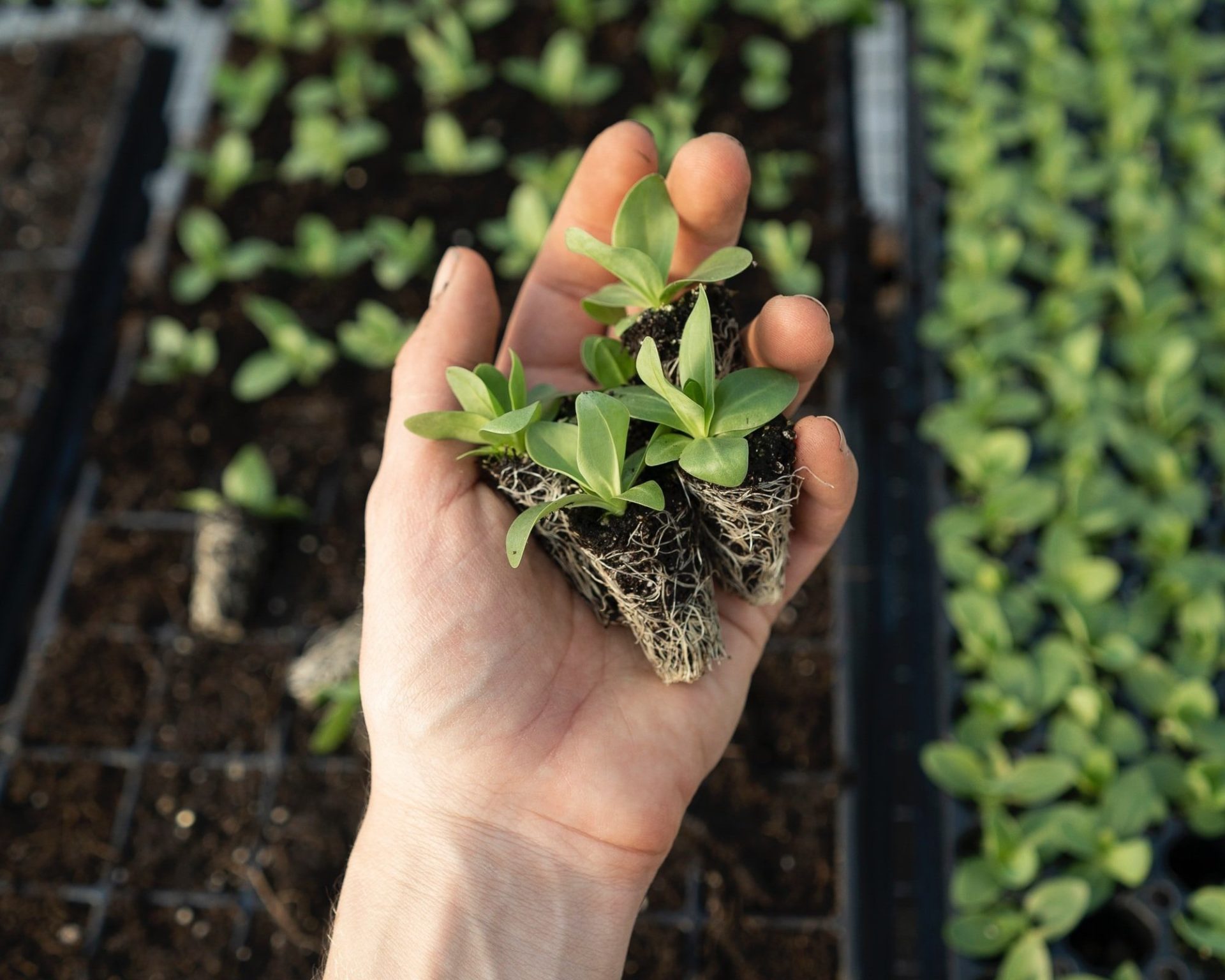
January 2020: the start of the global Covid-19 pandemic. Individuals and families worldwide rushed to grocery stores, emptying out frozen and packaged food aisles and stocking up their kitchens with months-worth of supplies. Today, two years later, the situation has calmed down, but food insecurity and food justice concerns remain a challenge.
During this time, we’ve seen massive upheavals in our food system with issues in supply chains, drastic increases in fresh produce prices, labor shortages, and malnourished marginalized communities. Covid-19 has more than warned mankind of the fragilities of our global food system. It signals the dangers that lie ahead with the looming wave of climate change.
With the sudden onset of the pandemic, we’ve made a lot of poor, miscalculated decisions. But, some things have also changed for the better. Let’s take a look at some of the ways the pandemic has upended the trend in food consumption in a dramatic fashion:
#1: A renewed focus on nutrition and farming at home
With the growing number of health scares, the food industry saw a renewed focus on health and nutrition. During the pandemic, more than 20 million Americans planted a vegetable garden for the first time as people explored new hobbies at home, according to a recent survey by supplier Bonnie Plants.
Farming operations supplied more easy-to-use starter kits, and at-home grow kits for this market interested in testing out their green thumbs. Products like Smallhold’s Mushroom kits and Click And Grow’s Smart Gardens helped beginners not only pick up a new skill that brought food production into homes, they also allowed consumers to harvest produce on-demand at peak freshness, grow foods adapted to specific dietary needs, and ensure food safety within their own homes.
#2: AgTech businesses are showing their resilience by pivoting models
Just as the 2008 economic recession disrupted the U.S. economy and set the stage for new, industry-changing companies such as Uber and Airbnb, the pandemic has caused similar shifts within the food industry.
Restaurants shut down and disrupted food supply chains, spotlighting the indoor farming trend and inspiring agricultural technology companies (or “AgTech”) to pivot. According to respondents of the 2020 Global CEA Census, there was a sizable shift in sales mix away from business-to-business transactions – particularly in the hospitality industry – and towards business-to-consumer models. Website request forms and ordering platforms provided the most significant boost for farms able to pull off this shift.
The company Smallhold, for example, was one of the quickest companies to respond and started hosting a series of pop-ups, where they sold fresh mushrooms as well as Grow Kits for people to grow their own mushrooms at home. They also launched home delivery services, allowing people to place orders through an online form for their twice-a-week deliveries.
Similarly, Farm.One pivoted from supplying rare microgreens and edible flowers to prestigious Michelin-starred chefs to offering their products directly to NYC consumers for use in their home cooking with weekly home delivery subscriptions.
#3: More investments than ever before
Investments are pouring into the industry, major acquisitions of indoor-agriculture companies by global conglomerates are occurring, and controlled environment agriculture (CEA) funds are witnessing successful rounds. For reference, Agritecture defines CEA as any farming in a protected facility where the climate can be controlled – typically in the form of a greenhouse or indoor vertical farm, and often using soilless growing methods such as hydroponics or aquaponics.
In July 2021, leading sustainability-driven investment management firm, Equilibrium Capital, announced the closing of their new Controlled Environment Foods Fund II (CEFF II) at $1.02 billion. This success allows Equilibrium to invest at a massive scale in mostly high-tech greenhouses across North America and focus on mass CEA production.
In August 2021, Taylor Farms, North America’s largest grower and processor of leafy greens, grabbed headlines for their investment in Pure Green Farms, a hydroponic lettuce grower in Indiana, signaling optimistic growth of the CEA industry.
Given these wins, CEA businesses have shown extreme optimism and resilience despite the pandemic. 95% of respondents to the 2020 Global CEA Census had a positive outlook for the future; 56% of respondents reported that crop sales were the same as 2019 or had increased despite COVID interruptions. In 2021, a higher percentage of respondents even pursued funding (58%).
#4: Marginalized communities still face the biggest challenge
Hunger, food insecurity, and poor access to healthy food continue to impact underserved communities of color disproportionately. According to a recent article on the status of hunger in NYC, “three out of four food pantries and soup kitchens saw an increase in the total number of visitors compared to the year before, and two of the largest emergency feeding programs have reported significant strain on their systems.”
It’s clear the initiatives that existed pre-pandemic were ill-equipped to handle this massive increase in demand for food. As such, many local non-profit organizations have been working around the clock to meet this demand. Teens For Food Justice, for example, has been working to lessen this burden by empowering the youth to contribute to a more food-secure future through creating and managing high-capacity vertical hydroponic farms within their schools. In partnership with the Queens South Borough Office of the NYC Department of Education, this USDA grant winner is now working to construct vertical farms and increase food security in the Far Rockaways, a community that has been particularly challenged by recent natural disasters and the pandemic.
#5: Increased attention is being driven to the sustainability metrics of CEA operations
The industry continues to see increased criticism for its high energy use, particularly vertical farms. This begs the question: how sustainable is the CEA industry really?
WayBeyond and our company Agritecture set out on a mission to unravel growers’ perspectives on sustainability and how they measure specific ESG (environmental, social, and governance) outcomes. One of the most shocking revelations of the 2021 Global CEA Census was that 70% of CEA operators believe the industry to be susceptible to excessive greenwashing, however, 48% of respondents track sustainability metrics by “manually calculating every now and then” and another 27% do not track at all. For reference, the census defines greenwashing as “providing misleading information so as to create the impression that a company or product is more sustainable than it actually is.”
While the census didn’t have all the answers, it sheds light on what the CEA industry is doing right and where it needs to step up its game.
#6: Farm planning is going digital
The growing interest in urban agriculture during the pandemic inspired the Agritecture team to launch Agritecture Designer in 2020. In providing entrepreneurs with numerous tools to take on the challenge of planning their urban farms successfully, Agritecture Designer has modeled over 208 greenhouses and 305 vertical farms to date.
The Commercial Urban Farming master class adjacent to the software provides the foundational knowledge for anyone – experienced or not – to set out on planning their urban farms. The software allows entrepreneurs to build and compare unlimited CEA farm models, estimate their financials, and calculate a fair market value for their crops. Additional resources like the Advisor Bundle and the Agritecture Partner Network further support entrepreneurs in planning their farms.
#7: Labor shortages and growing supply chain issues drive up prices
While the number of greenhouses and vertical farms is growing rapidly, the number of trained professionals with CEA operating experience is not keeping up with this increasing demand. Gender and racial inequality, a lack of opportunities for migrant workers, aging farmers, and an increasing number of barriers for farmers to set up their businesses continue to stress the agricultural industry.
The result of this shortage is inflation and price fluctuations. According to the Bureau of Labor Statistics’ monthly consumer price index, grocery prices were up by 7.4% over the past year, and the inflation rate is at a 40-year high. The lack of workers plays a significant role in these price hikes.
Fortunately, Gen Z-ers are showing interest to focus on more environmental-related degrees, and Millennials are starting to choose urban farming as a career. As a result of this trend, universities nationwide are developing new CEA and urban ag-focused degrees and programs to help create and inspire a new generation of farmers.
#8: Alternative proteins continue to face barriers to breakthrough
According to the Financial Times, the retail price of plant-based meat is predicted to fall to parity with real meat in two to three years. Israeli start-up Future Meat Technologies has already “managed to make a chicken breast from real chicken cells cultured in a bioreactor for $7.50 — a fraction of the $300,000 price tag when lab-grown meat was introduced back in 2013.”
However, industry leader Beyond Meat has seen a drop in the market ever since reporting “a wider-than-expected loss and shrinking revenue for its fourth quarter as it shifts its focus from slumping grocery sales to scaling its production for large fast-food launches.”
Even though there might be a funding boom for faux meats, the true challenge is time. Food and agriculture innovation take time, and unfortunately, consumer behavior in this market is still driven by price.
#9: Urban agriculture is becoming crucial to city planning and policy
More cities are starting to push urban agriculture policy initiatives forward, making CEA a crucial element in master planning projects. As has been long demanded by advocates in cities around the world, city officials are beginning to prioritize urban agriculture policy initiatives. In October 2021, a major metropolitan hub announced that it would establish an urban agriculture office and an urban agriculture advisory board.
More time and money are being invested in master planning projects having an agricultural focus. NEOM is one such project driving the future of food production in urban environments. This $500-billion technological megacity in Saudi Arabia will strive to become the world’s most food self-sufficient city. Similarly, Dubai is building a smarter food system with their new Food Tech Valley, an integrated modern city that will serve as a hub for future clean tech-based food and agricultural products.
Even before the onset of the Covid-19 pandemic, the food system was facing a myriad of challenges across the globe.
The pandemic has aggravated many of those pre-existing challenges, exacerbating hunger and food insecurity in marginalized communities and intensifying labor shortages. New challenges have also been unveiled during the pandemic, especially around supply chain issues from sourcing and pricing perspectives.
Despite the series of challenges both intensified and brought forth by the Covid-19 pandemic, there have also been some major wins across the globe in terms of working to increase food security. From more investments than ever before being poured into companies seeking to solve agri-food related challenges to major metropolitan areas across the globe integrating urban agriculture into policies, we, at Agritecture, remain optimistic about the future of the food industry. To ensure a food-secure future, we believe stakeholders must join forces and work collaboratively to take on this pressing mission.

Henry Gordon-Smith
Henry Gordon-Smith is a sustainability strategist focused on urban agriculture, water issues, and emerging technologies. Henry earned his BA in Political Science from the University of British Columbia, Vancouver, coursework in Food Security and Urban Agriculture from Ryerson University in Toronto, and an MSc in Sustainability Management from Columbia University. In 2014, Henry responded to a global need for technology-agnostic guidance on urban agriculture by launching the advisory firm Agritecture Consulting which has now consulted on over 150 urban agriculture projects in over 35 countries.

Dhwani Laddha
Dhwani Laddha is Agritecture’s Junior Designer. She manages Agritecture’s online presence to raise awareness and educate users on the importance of sustainable urban agriculture for developing smart and resilient cities. As an interdisciplinary designer with a BFA from Parsons and a minor in the design of sustainable cities, she aspires to transform how our cities and societies function. She additionally supports marketing initiatives and spearheads the branding and design efforts for client projects.






